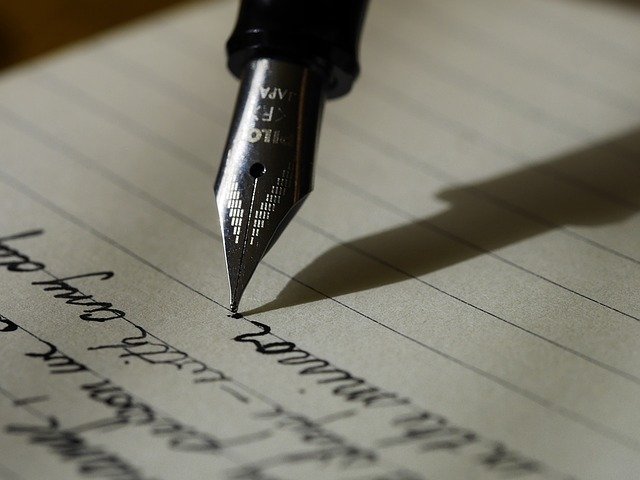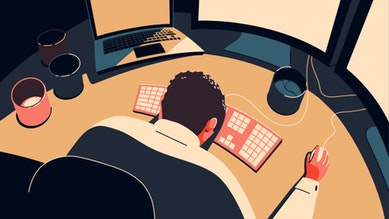Typesetting is the most basic element of creating a printed book, newspaper, or magazine. Originally, the process of setting type was done by hand, but over the centuries, as technology has advanced, publishers have used machines to make typesetting faster. It's important to remember how much time and effort have been required to print books so we can fully appreciate the work that goes into conveying information via the printed page.
What Is Typesetting?
- Typesetting is putting physical or digital letters in the correct arrangement so that they can be printed onto a page.
- Setting type is part of the design process for any book, newspaper, or magazine.
- Typesetting can be practical, ornamental, or both; good typography can make text easier to read and more attractive to the eye.
The Invention of the Printing Press
- The Chinese created some of the earliest printing presses. There are printed Chinese works dating back to before 1000 A.D.
- The earliest dated printed work is The Diamond Sutra, which was printed in 868, during the Tang Dynasty.
- Chinese publisher Bi Sheng used clay type to create printed works.
- In 1297, Wang Chen invented a revolving table of type to increase printing speed.
- It wasn't until 1440 that the modern printing press was invented in Mainz by German metalworker Johannes Gutenberg.
- A printing press is a machine with metal letters that are covered in ink and then pressed onto paper to form printed text.
- The Gutenberg printing press, with a speed of 3,600 pages a day, led to the mass production of books, making knowledge accessible to the public instead of just the moneyed elite and the clergy.
Manual Typesetting
- Manual typesetting was a long and arduous task. A typesetter had to handpick individual letters and set them into position a line at a time. Multiple lines of letters were combined into forms.
- If a form would be used repeatedly for multiple prints, the printer would stereotype it. Stereotyping is when the entire text of a paragraph or page is cast in metal so that it can be repeatedly printed without having to set the text again.
- Manual typesetting is now practised only by typesetting aficionados and artisans.
Hot-Metal Typesetting
- Hot-metal typesetting, also just called "hot type," was more efficient than manual typesetting. It required less physical labour, took less time, and the letters were crisper.
- In hot-metal typesetting, molten lead is poured into a cast, which is then used to make the characters or entire lines of type that are pressed into the paper.
- The technique was popular until the 1950s when electronic printing became possible.
- There were two main types of hot-metal typesetting machines: the Monotype composition caster and the Linotype.
Phototypesetting
- Phototypesetting, as its name suggests, was based on photography. Light was beamed through a negative filter to create a mirror image that would then be transferred to photographic paper and processed with chemicals.
- A phototypesetting machine would be used to create a single, long column of printed text. Then, this text would be cut out and pasted into position to form a complete page, a process known as paste-up. The finished page would be photographed to create a negative that would be used to make a printing plate.
- Eventually, phototypesetting was done by primitive computers.
The Digital Era of Typesetting and Graphic Design
- In the digital era, typesetting is done on computers, and typesetters have much more flexibility about choosing the most appropriate fonts and incorporating appropriate design elements into a document.
- When people make mistakes in typesetting, it can make the document harder to read. Mistakes may include incorrectly spacing the letters or choosing typefaces that are not appropriate for the document or do not work well together.
- Typesetting must be coordinated with other elements on the page, such as photos and white space.
- Stretching text is an ability that can be used to create an artistic effect, but it can also easily create visual distortions that distract the reader.
- A variety of typesetting software options are available, but good typesetting is a combination of technological tools and skills on the part of the typesetter.
- Kerning is the spacing between letters, and good kerning is one of the basic elements of good typesetting.
- Graphic design artists may add stylistic elements like drop caps, which give elegance to the beginning of a chapter or article.
- Widows and orphans are two issues that can crop up in text that should be avoided. A widow is a single word or part of a word at the bottom of a column of type, and an orphan is a single word or part of a word at the top of a column of type. Both widows and orphans create awkward-looking white space, disrupting the eye.
- The practice of combining type, images, and other elements to create a single printed page that's easy to read and pleasing to the eye is known as pagination.



